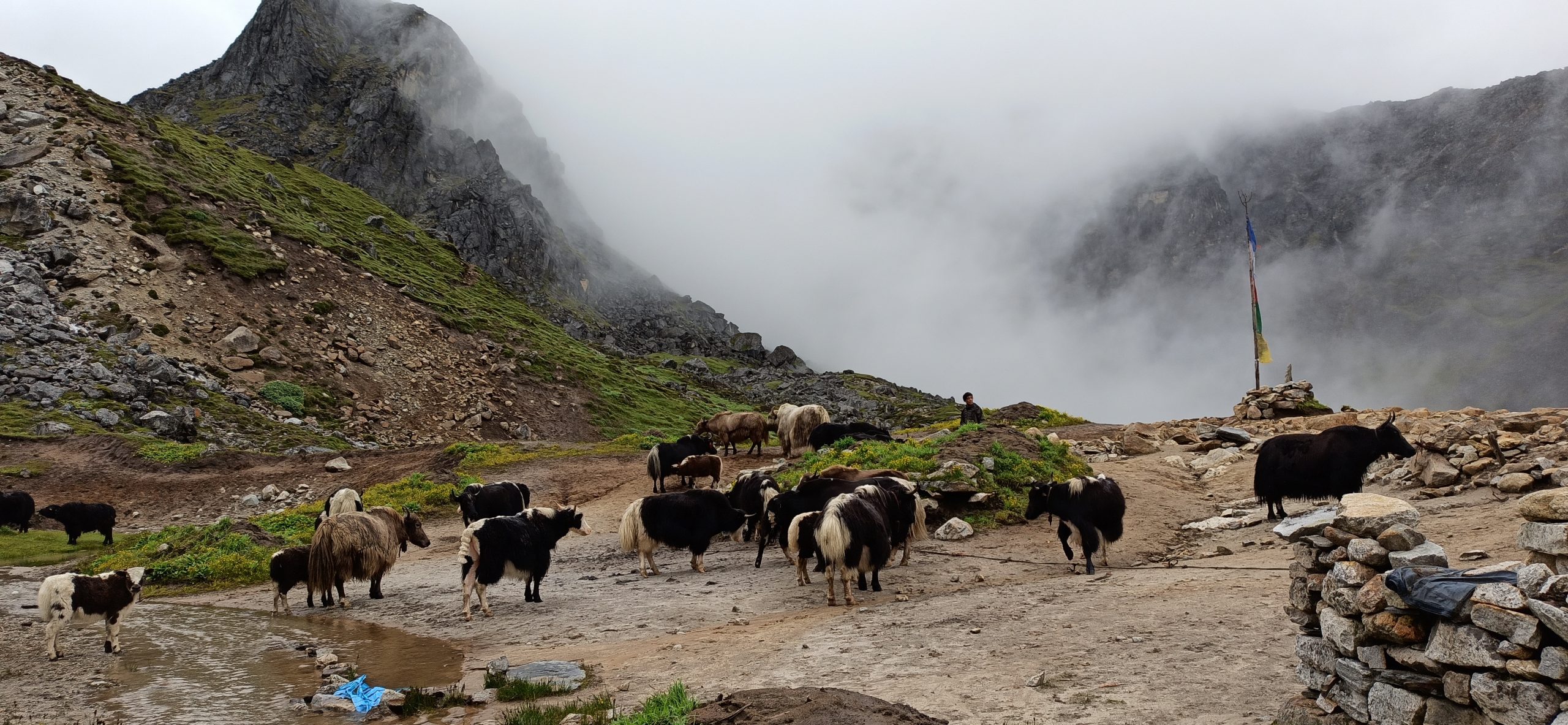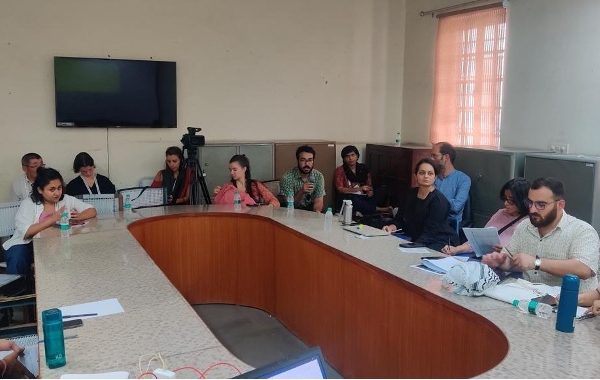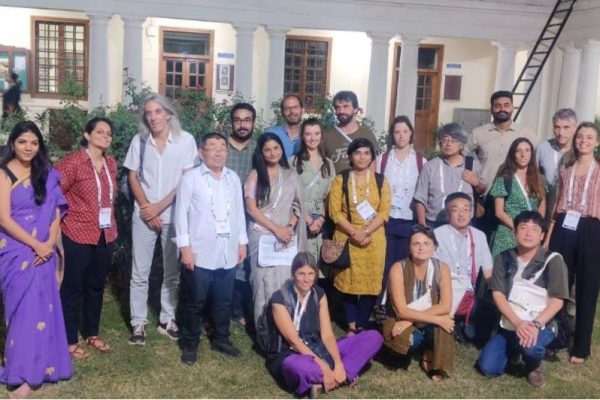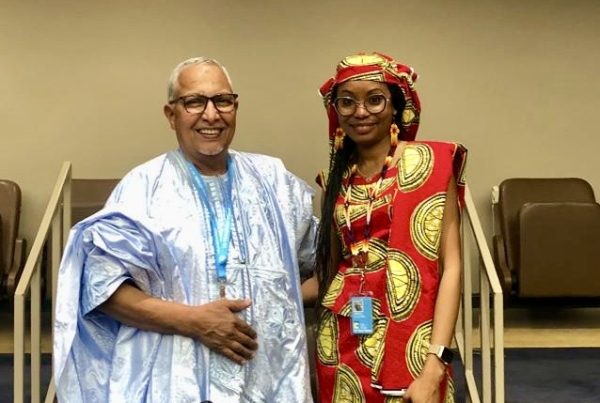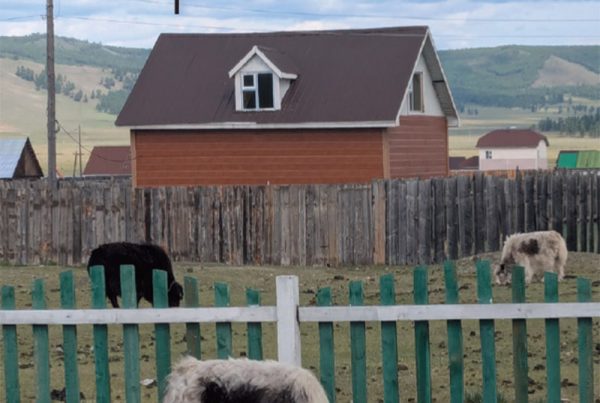Panel organisers and participants with the members of the Commission for Nomadic People at the IUAES conference.
By Suraj Pratap Singh Bhati, Rashmi Singh and Ryan Unks
This blog is based on the discussions during a panel at the International Union of Anthropological and Ethnological Science Conference (IUAES), held between 14-20 October 2023 in Delhi, India. The panel organized by the authors was titled Pastoral Mobilities and Ecological Variabilities: Responses to Socio-Political stressors, and contextual adaptabilities in South Asia. The panel had four presentations where the scholars addressed the central theme –Mobility through different lenses in their study site. In this post the authors bring a synthesis around the work that the scholars presented in the panel, mostly work in progress and yet to be published.
The dichotomy between sedentary and mobile has been one of the principal reasons for the marginalisation of pastoralists. The pre-colonial, colonial and post-colonial states in South Asia have shared similar trajectories and have enhanced this dichotomy, through restricting their mobility, often resulting in further marginalization of the pastoralists communities. Pastoral systems are embedded in unique socio-ecological contexts and are highly adapted to the local social, political, and ecological variabilities and uncertainties. Mobility in pastoral systems is the key to these adaptations, and it is highly variable and dynamic across different contexts.
Loss of mobilities and changes of access to land and resources has been driven by sedentarization polices of states seeking legibility and control over land, developmental interventions driven by the ‘will to improve’; and both exclusionary ‘fortress conservation’ and alternative ‘community-based’ variants of conservation. Fragmentation of extensive pastoral landscapes, changing socio-political systems that pastoralists are embedded in, and changing climate regimes all are being responded to in turn through contextual adaptabilities.
While mobility is an inherent characteristic of pastoral livelihoods, its understanding can vary contextually, even for the scholars who explore these livelihoods. This contextual understanding is the defining feature of different ‘pastoralism’.
Understanding Mobilities and the Contextual Stressors
Pastoralists’ responses to variabilities are derived through a consideration of ecological, social, and political factors and uncertainties. Across these variables and uncertainties, pastoralists situate a dynamic niche for their livelihoods. This dynamic niche, which is a result of their mastered skill of adaptation to all kinds of uncertainties determines the continuity of these livelihoods. The case study by Tenzin Yangkey, who presented virtually, examines one such context in the Western Indian Himalayas, and the interactions of Tibetan refugee pastoralists with variabilities of urbanization, generational change, climate change and the broader socio-political positionality. She situates the perception of climate change and its impacts in the form of reduced snowfall, degrading pastures, feed expenses and reducing income from pashmina and wool. Local adaptations to these variabilities range from buying supplements, water pooling through reservoirs and aid received through the provincial government and Central Tibetan Administration. While mobility is severely limited due to their political status, the aid received plays an important role in the Tibetan refugees’ capacity to adapt to the local stressors.
Another case study from the Western Himalayas by Afreen Faridi provides an outlook on different socio-political stressors faced by the Gujjar-Bakarwals pastoralist communities of the Indian-administered state of Jammu and Kashmir. He explains the expansion of a ‘modern’ state and its privatised property regime in the backdrop of the criminalization of a community and its transhumant nature. While the state policies have promoted tools to present tribal interests, local responses have been vague. Much like Tenzin’s work, Afreen highlights limitations on mobility owing to political and economic policies in the region, which have furthered enclosure and border-making. He further highlights the usage of technologies like GIS, which potentially act as tools of surveillance and regulation for pastoralists while being aimed at national security and protecting international borders. Afreen describes such efforts as ‘Technologies of dispossession and sedentarisation’. These technologies include lawmaking, changes in demography and re-organization of the federal structure, which affect the material and political representation of nomadic communities. The abrogation of Article 370, the redrawing of political claim-making in the region, and changes in forest laws have simulated non-native immigration and have situated traditional dwellers as encroachers, thereby immobilizing nomadism. Afreen highlighted the dire conditions of pastoralists across the world while specifically expressing solidarity with the people and nomadic communities in Palestine who face colonial oppression and erasure. We see two different forms of stressors developing through one political scenario and its translation to two different marginalized groups in the cases of Afreen Faridi’s and Tenzin Yangkey’s work.
Moving towards the Western Indian Drylands, Natasha Maru focuses on the concept of ‘pace’ and brings attention to the temporal dimensions of mobility in pastoral livelihoods. She describes multiple types of mobilities, which include seasonal and daily mobilities and how they are destructed and reconstructed in response to the broader changes, where she complicates the understanding of mobility and shows how the pastoralists are both ‘paced by’ a variety of social and ecological changes in the system and also manage their ‘pace’, mediated by political, regional and cultural events and ecological variability and uncertainty. The need for a nuanced understanding of mobility in pastoral contexts is foremost while developing a framework for studying pastoral livelihoods. This nuanced understanding must pass through ecological, social, political, as well as temporal and spatial variables. The foremost questions of, mobility of what, when, where, why and how, help situate pastoral livelihoods and their associated stressors and how pastoralists navigate the conjecture of state, non-state and ecological processes.
Munib Khaniyari and Rashmi Singh Rana explore a different dimension of pastoral mobilities and their links to zoonotic diseases. They highlight the need to assess the socio-cultural, economic and ecological status of rangeland and pastoral health in Indian trans-Himalaya. Using the lens of disease ecology to understand rangeland health at the livestock-wildlife interface in Pin Valley, they discuss how the mobile livestock of the Kinnaura tribe (a nomic tribe of the Indian Himalaya region) was found to have a higher load of an endo-parasitic burden than the sedentary livestock in the region and stress the need for participatory livestock health management with the herders to ensure that disease transmission is between the livestock and wild herbivores like ibex, blue sheep and others are controlled to manageable levels. They also touch upon the implications of dynamic pasture access, both restriction and overuse, especially in the advent of climate-induced degradation in pasture quality, which inevitably impacts livestock health, mobility decisions and pastoral livelihoods.
With the proposed panel with case studies on pastoral systems of South Asia, we aimed to compare and contrast contextually specific stressors to pastoral mobilities and adaptive responses of the pastoralists across the study sites. The case studies highlighted how pastoral mobilities continue to be entangled across various factors, but there are visible continuities. While climate change and land use change are some of these uncertainties, the state plays a driving role. A closer look at the state interventions in multiple case studies of South Asia provides an outlook of the colonial origins of the current state policies and its understanding of these livelihoods and their landscape. The same understanding fuels political systems and their efforts towards development and conservation in the pastoral landscape.
The discussion in the panel explored the multiple meanings and lenses to explore pastoral mobilities and their associated stressors. Nuancing the concept of mobility in the pastoral landscape is critical in informing rangeland policies and dialogues around pastoral land rights and their participation in policy formation.
